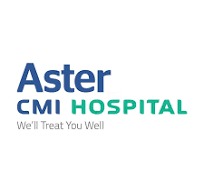Persistent headaches and disoriented thinking can be a sign of Glioblastoma
Dr. Prasanta Kumar Parida, Senior Consultant Medical Oncology, HCG Panda Cancer Hospital, Cuttack The Central Nervous System (CNS) is one of the most crucial parts of the nervous system as it comprises of the brain and

Dr. Prasanta Kumar Parida, Senior Consultant Medical Oncology, HCG Panda Cancer Hospital, Cuttack
The Central Nervous System (CNS) is one of the most crucial parts of the nervous system as it comprises of the brain and the spinal cord. When the nervous system gets affected, it can cause frequent headaches, seizures, dizziness and in some cases even nausea and vomiting leading to one of the aggressive type of brain and spinal cord cancer also known as the glioblastoma.
Glioblastoma, also known as Glioblastoma multiforme, is a type of cancer that occurs either in the brain or spinal cord, in the astrocytes – a type of glial cells tiling the Central Nervous System. Though often diagnosed among the elderly, Glioblastoma can occur at any age. Being one of the fast-growing tumours, Glioblastoma poses many challenges during treatment. In most cases, the treatment aims to reduce the symptoms and slow their progression.
Causes
Glioblastoma is one of the common types of malignant tumours. The growth of cancer cells that occur in the star-shaped astrocytes thrive on their own blood supply, making them grow faster, spread, and metastasize to other parts of the healthy brain tissue. Unfortunately, there is no specific reason behind the occurrence of Glioblastoma.
Symptoms of Glioblastoma
- Persistent splitting headaches
- Sudden onset of seizures
- Dizziness
- Nausea and vomiting
- Lack of balance, coordination
- Loss of strength and muscle
- Disrupted vision and hearing abilities
Types of Glioblastoma
There are two types of Glioblastoma:
- Primary Glioblastoma:
Most glioblastomas are primary glioblastomas, which are very aggressive and grow and spread faster.
- Secondary Glioblastoma:
This develops from low-grade glioma and is often found in younger people. It is usually diagnosed in the brain’s frontal lobe and has a better survival rate than primary Glioblastoma.
Diagnosis
Glioblastoma is diagnosed by running new imaging tests and coordinating the results with neurological exams and biopsy.
- Neurological Examination:
One of the primary symptoms of Glioblastoma is interfering with neurological factors. The doctor will check for any vision, hearing loss, lack of balance and coordination, and disturbances in reflexes. If the patient is diagnosed with problems in any of these areas, the doctor would recommend further tests.
- Imaging Tests:
Imaging diagnostic tests like MRI, CT-Scan, and PET-CT help in further evaluating the tumour by determining the size and location of the brain tumour.
- Biopsy:
A biopsy is a minimally invasive procedure where a sample tissue is excised from the location of the tumour. While in some instances, it is done through a needle before surgery, a few patients may have to undergo surgery to remove Glioblastoma, and the sample from the tumour will be sent to the lab for further analysis.
Treatment
Surgery:
Surgery forms the first step toward treating Glioblastoma. Since Glioblastoma invades faster into the normal brain tissue, it is impossible to remove it completely. However, the goal during the procedure would be to remove the tumour as much as possible.
Chemotherapy:
Chemotherapy forms the next step in dealing with Glioblastoma. It is administered through pills simultaneously with radiation therapy. In some cases, the surgeon would place a thin, circular wafer kind of materials laced with chemotherapy medication in the brain during the procedure. These wafers dissolve slowly, releasing the medicine for killing cancer cells.
Radiation Therapy:
In Radiation Therapy, high-energy beams similar to X-rays or protons are targeted on the cancer cells for elimination.
Tumour Treating Fields:
Tumour Treating Fields Therapy is an advanced procedure that reduces the ability of the tumour cells to mutate or multiply. It is done by applying adhesive pads connected to a portable device, generating the electrical field attached. It is done in combination with chemotherapy or after radiation.
Targeted Drug Therapy:
Targeted drugs aim at the specific abnormalities in cancer cells, which help them to grow and mutate. These drugs disrupt the nutrient supply to the cancer cells, making them die.
Palliative Care:
Palliative care is specialized medical care that aims at bringing down the symptoms, pain, and other severe signs caused due to Glioblastoma. The compassionate support extended to the patient and their families would help in easing the suffering.
It is important to address the symptoms like severe nausea, vomiting, persistent dizziness, headaches, and seizures at the earliest. Do consult your doctor immediately for accurate diagnosis and treatment.






